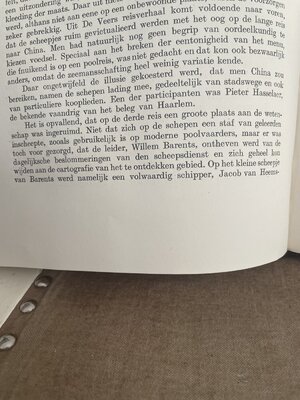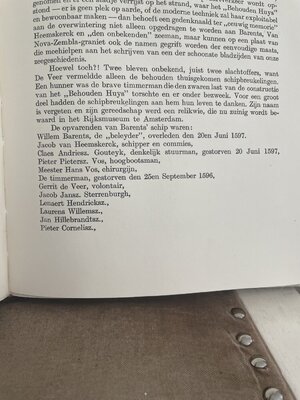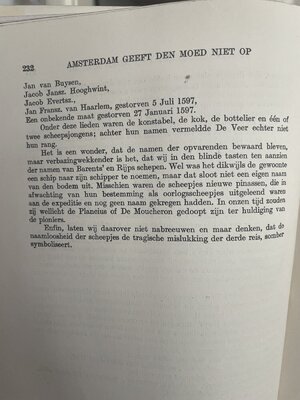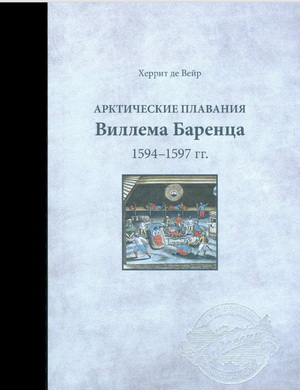True storyHeinrich, gosh, I do so love your enthusiasm. And although we never met, I sense, confidently that it permeates every aspect of your life. And if that is the case, there are so many beneficiaries out there that are lucky to know you, all ship stuff aside.
-

Win a Free Custom Engraved Brass Coin!!!
As a way to introduce our brass coins to the community, we will raffle off a free coin during the month of August. Follow link ABOVE for instructions for entering.
-

PRE-ORDER SHIPS IN SCALE TODAY!
The beloved Ships in Scale Magazine is back and charting a new course for 2026!
Discover new skills, new techniques, and new inspirations in every issue.
NOTE THAT OUR FIRST ISSUE WILL BE JAN/FEB 2026
You are using an out of date browser. It may not display this or other websites correctly.
You should upgrade or use an alternative browser.
You should upgrade or use an alternative browser.
HIGH HOPES, WILD MEN AND THE DEVIL’S JAW - Willem Barentsz Kolderstok 1:50
- Joined
- Jan 9, 2020
- Messages
- 10,547
- Points
- 938

Dear Ken. Your beautiful sentiments make me blush and feel guilty at the same time. Whilst I am normally very enthusiastic about everything I do, it is also true that I currently suffer from a lack of it, and I am not sure why. However, reading through all the superb build logs on SOS and the excellent work being done (your efforts on the stern/transom of Le Fleuron being a case in point) it just serves as a reminder of what a beautiful and special hobby we are busy with.Heinrich, gosh, I do so love your enthusiasm. And although we never met, I sense, confidently that it permeates every aspect of your life. And if that is the case, there are so many beneficiaries out there that are lucky to know you, all ship stuff aside.
- Joined
- Aug 8, 2019
- Messages
- 5,523
- Points
- 738

Sound like 3 and 2 shots2 x glasses of Pinot Noir
- Joined
- Oct 15, 2017
- Messages
- 1,190
- Points
- 443

Ouch! Was it that bad?Sound like 3 and 2 shots
- Joined
- Jan 9, 2020
- Messages
- 10,547
- Points
- 938

No apologies needed my friend. Language is a communication tool - no more, no less. If the recipient of the message understood the intended meaning, it is mission accomplished.Heinrich, please accept my apologies for my grammatical abuse of the English written language in my last post. No excuse other than fatigue an 2 x glasses of Pinot Noir.
Everyone has a building dip once in a while…Dear Ken. Your beautiful sentiments make me blush and feel guilty at the same time. Whilst I am normally very enthusiastic about everything I do, it is also true that I currently suffer from a lack of it, and I am not sure why. However, reading through all the superb build logs on SOS and the excellent work being done (your efforts on the stern/transom of Le Fleuron being a case in point) it just serves as a reminder of what a beautiful and special hobby we are busy with.
- Joined
- Jan 9, 2020
- Messages
- 10,547
- Points
- 938

Thank you for the support, Hans. I suppose the realization that I am not going to be able to find a final answer (despite hundreds of hours of research) has somewhat taken the stuffing out of the build for me. I will see where my muse takes me.Everyone has a building dip once in a while…
Not to discourage you, but recently I read a book by Mr J.C. Mollema - De Nederlandsche vlag op de wereldzeeën - driemaal is scheepsrecht.
This book is about the three journeys which were made to find the northern passage.
The book is from 1930, so before any archives were lost in the second world war.
Two things were described in this book:
- of the two ships on the third journey, Barentsz sailed on the bigger one. See image
(translated):
" On the small ship of Barentsz was an experienced shipper (captain) in charge, Jacob van Heemskerck, with volunteer Gerrit de Veer as the helper of Barentsz, where Barentsz himself was the "beleyder" of the journey, in more modern Dutch the technical leader of the journey. (..) The command of the second, smaller ship was Jan Cornelisz. Rijp...(.) "
- All the sailors on Barentzs ship where known, see image. But Mollema writes:
(translated).
"It is a wonder that all the names of the sailors where written down, but the more astonishing is, that we are completely blind regarding the names of Barentzs' and Rijp's ships..."
I think already in the 1930's there has been done a lot of research to find the names of the ships, but with no result.




This book is about the three journeys which were made to find the northern passage.
The book is from 1930, so before any archives were lost in the second world war.
Two things were described in this book:
- of the two ships on the third journey, Barentsz sailed on the bigger one. See image
(translated):
" On the small ship of Barentsz was an experienced shipper (captain) in charge, Jacob van Heemskerck, with volunteer Gerrit de Veer as the helper of Barentsz, where Barentsz himself was the "beleyder" of the journey, in more modern Dutch the technical leader of the journey. (..) The command of the second, smaller ship was Jan Cornelisz. Rijp...(.) "
- All the sailors on Barentzs ship where known, see image. But Mollema writes:
(translated).
"It is a wonder that all the names of the sailors where written down, but the more astonishing is, that we are completely blind regarding the names of Barentzs' and Rijp's ships..."
I think already in the 1930's there has been done a lot of research to find the names of the ships, but with no result.




Last edited:
- Joined
- Jan 9, 2020
- Messages
- 10,547
- Points
- 938

Now that is brilliant, Hans. I take my hat off to Mr. J.C. Mollema. His frustration is tangible and echoes my sentiments almost verbatim. There are so many things that just do not make sense such as Barentzs's "Lost" ship journal from which German, Hessel Gerritz quotes. How is that possible if the journal is lost. There is also the issue of the Nova Zembla occurrence - far too technical for me to go into this, here, but suffice to say that it was an astrological phenomenon which was described in detail by Gerrit van de Veer. Now bear in mind that De Veer had no knowledge of these things - he almost certainly copied his writing from Barentsz's ship journal - but yet, it is claimed that the journal was lost.
As to the ships being so new that they had not yet been commissioned and as such have not yet received names - this is certainly a possibility as the same thing happened to the "Jacht of Rotterdam" during the second expedition. However, I believe that ships of 30 and 50 lasten were too small to have been war pinas. We know from the second expedition that the two war pinas which both took part in that expedition, were 100 lasten.
Of course, everything I have written here, relates only to what we know from a Dutch perspective. We keep on missing the point that the Russians have recovered far more of Barentsz's ship than what is known in the West and that they have no doubt in calling it De Mercurius.
As to the ships being so new that they had not yet been commissioned and as such have not yet received names - this is certainly a possibility as the same thing happened to the "Jacht of Rotterdam" during the second expedition. However, I believe that ships of 30 and 50 lasten were too small to have been war pinas. We know from the second expedition that the two war pinas which both took part in that expedition, were 100 lasten.
Of course, everything I have written here, relates only to what we know from a Dutch perspective. We keep on missing the point that the Russians have recovered far more of Barentsz's ship than what is known in the West and that they have no doubt in calling it De Mercurius.
- Joined
- Jan 9, 2020
- Messages
- 10,547
- Points
- 938

Dear Friends
I have been asked many times why the Russians have shown such an active interest in Barentsz's ship.
It turns out that their interest was way more profound than even I could have imagined. From an undisclosed (by me) Russian thesis.
The adventures of the Dutch on Novaya Zemlya immediately became widely known thanks to Gerrit De Veer's diary, published a year later. It was immediately translated into many European languages.
Of course, there was no Russian translation among them. In Russia, the Barents voyages became known to the public only in the second half of the 18th century, when the historian Gerard Miller translated from a German publication a brief description of the "misadventures of the Dutch on Novaya Zemlya." However, more than 100 years ago, in Russian archives, it was possible to find Russian murals from the time of Alexei Mikhailovich with a translation of one of the "extracts" (abbreviated versions) of De Veer's diary.
And it is remarkable that the Tsar personally familiarized himself with them – the manuscript has preserved notes made by his hand. But these documents under the general title "Description of what is impossible to pass from the city of Arkhangelsk by sea to the Chinese state and from there to Eastern India" were kept in the Order of Secret Affairs, and, therefore, their contents were considered a state secret.
I have been asked many times why the Russians have shown such an active interest in Barentsz's ship.
It turns out that their interest was way more profound than even I could have imagined. From an undisclosed (by me) Russian thesis.
The adventures of the Dutch on Novaya Zemlya immediately became widely known thanks to Gerrit De Veer's diary, published a year later. It was immediately translated into many European languages.
Of course, there was no Russian translation among them. In Russia, the Barents voyages became known to the public only in the second half of the 18th century, when the historian Gerard Miller translated from a German publication a brief description of the "misadventures of the Dutch on Novaya Zemlya." However, more than 100 years ago, in Russian archives, it was possible to find Russian murals from the time of Alexei Mikhailovich with a translation of one of the "extracts" (abbreviated versions) of De Veer's diary.
And it is remarkable that the Tsar personally familiarized himself with them – the manuscript has preserved notes made by his hand. But these documents under the general title "Description of what is impossible to pass from the city of Arkhangelsk by sea to the Chinese state and from there to Eastern India" were kept in the Order of Secret Affairs, and, therefore, their contents were considered a state secret.
That is an incredible find. I love history.
Jan
Jan
- Joined
- Aug 30, 2020
- Messages
- 676
- Points
- 353

Your research on this whole build has been incredible, the information you have have been able to dig up from all sorts of places is just amazing.Dear Friends
I have been asked many times why the Russians have shown such an active interest in Barentsz's ship.
It turns out that their interest was way more profound than even I could have imagined. From an undisclosed (by me) Russian thesis.
The adventures of the Dutch on Novaya Zemlya immediately became widely known thanks to Gerrit De Veer's diary, published a year later. It was immediately translated into many European languages.
Of course, there was no Russian translation among them. In Russia, the Barents voyages became known to the public only in the second half of the 18th century, when the historian Gerard Miller translated from a German publication a brief description of the "misadventures of the Dutch on Novaya Zemlya." However, more than 100 years ago, in Russian archives, it was possible to find Russian murals from the time of Alexei Mikhailovich with a translation of one of the "extracts" (abbreviated versions) of De Veer's diary.
And it is remarkable that the Tsar personally familiarized himself with them – the manuscript has preserved notes made by his hand. But these documents under the general title "Description of what is impossible to pass from the city of Arkhangelsk by sea to the Chinese state and from there to Eastern India" were kept in the Order of Secret Affairs, and, therefore, their contents were considered a state secret.
I think this now makes you appointed by me
- Joined
- Jan 9, 2020
- Messages
- 10,547
- Points
- 938

Dear Richie. I do love this post, because I do believe that I have put more work into this than most. And it's funny, just when I have made a conscious decision not to pursue this any further, a new piece of information crops up. The one thing that has been missing up to now in my research is the Russian perspective and take on things. Hopefully, this will explain that better - but now I need to translate this all from Russian!
It will be worth it though, because even now I can see that this contains certain aspects that I have not been aware of.
Thank you for the support, my friend.
It will be worth it though, because even now I can see that this contains certain aspects that I have not been aware of.
Thank you for the support, my friend.
- Joined
- Jun 17, 2021
- Messages
- 3,184
- Points
- 588

Sign me up!!! 
Pete
Pete
- Joined
- Jan 9, 2020
- Messages
- 10,547
- Points
- 938

Dear Peter! A very warm welcome aboard but be aware - it is a rough ride at times!Sign me up!!!
Pete

- Joined
- Jan 9, 2020
- Messages
- 10,547
- Points
- 938

@Kolderstok Hans I read and re-read this and finally the penny dropped!I read a book by Mr J.C. Mollema - De Nederlandsche vlag op de wereldzeeën - driemaal is scheepsrecht.
This book is about the three journeys which were made to find the northern passage.
The book is from 1930, so before any archives were lost in the second world war.
Two things were described in this book:
- of the two ships on the third journey, Barentsz sailed on the bigger one. See image
(translated):
" On the small ship of Barentsz was an experienced shipper (captain) in charge, Jacob van Heemskerck, with volunteer Gerrit de Veer as the helper of Barentsz, where Barentsz himself was the "beleyder" of the journey, in more modern Dutch the technical leader of the journey. (..) The command of the second, smaller ship was Jan Cornelisz. Rijp...(.) "
So, Mr. J.C. Mollema is 100% in agreement with me that Barentsz sailed on the bigger of the two ships during the 1596 expedition - not on the smaller one as Mr Hoving and De Weerdt would like us to believe.
Finally, someone else who read Gerrit De Veer's diary properly!
- Joined
- Jan 9, 2020
- Messages
- 10,547
- Points
- 938

Russian Explorers to Raise Willem Barents' (sic) Ship
(Updated: 28.08.2019 21:49) SCIENCE
A group of Tyumen researchers set off yesterday from Arkhangelsk to Novaya Zemlya to search for the sunken ship of the Dutch navigator Willem Barents, writes "Murmansk Vestnik". Five centuries ago, his caravel, the Mercury, tried to find a northern sea route to the East Indies and China, but sank on the way.
"The main task of this expedition is to discover and record the locations of this caravel. This is very important, because if we find and can study the keel part of the bottom, we will be able to raise the issue of reconstruction of such a vessel for the first time in the world," the head said. According to numerous engravings, it is known what the ships of the 15th-16th centuries looked like, but modern historical science does not have accurate information about the features of the design of the hulls and the technology of building these ships," the report says.
It is known that the ship's hull was made of oak, and there is a possibility that despite the passage of centuries under a layer of silt, it is well preserved and can tell scientists about its construction. The remains of the vessel were found during previous expeditions with the help of a metal detector and a magnetometer, Vesti.ru reports.
The current expedition in search of the Barents caravel is the fourteenth in a row. At the same time, as Gennady Danilov, adviser to the director of the Russian Arctic National Park, noted, the lifting of the ship will be carried out only after thorough preparation. "The work is very serious, the work requires control from the national park, since any violation of the natural conditions for the occurrence of cultural values is not allowed. Therefore, together with the expedition, we are taking part in this matter," he said. In the first week, with the help of high-precision equipment, it is planned to find the remains of the caravel, clear them of alluvial soil and determine the degree of preservation. In addition, specialists will measure the hull and develop a method for its lifting and conservation, the report says.
Subsequently, researchers hope to uncover several artifacts proving that they have indeed found Willem Barents' ship. Eight cannons, three anchors, two rynds and other ship's equipment should rest at the bottom of the sea together with the hull of the ship, the Independent-news.ru reports. The work will last a month.
My Comments:
1. The last expedition that I know of was in 2012. If these reports are correct (PRAVDA, ITAR-TASS), it would mean that the Russians' search for the ship had continued unabated. It does say it is the fourteenth expedition in a row.
2. It seems that prior to this expedition they had a good idea of where the wreck was.
3. It is significant that they know they are looking for 8 x cannons, 3 x anchors. etc.
4. There is no doubt in the Russian mind that the ship is called "Mercury".
(Updated: 28.08.2019 21:49) SCIENCE
A group of Tyumen researchers set off yesterday from Arkhangelsk to Novaya Zemlya to search for the sunken ship of the Dutch navigator Willem Barents, writes "Murmansk Vestnik". Five centuries ago, his caravel, the Mercury, tried to find a northern sea route to the East Indies and China, but sank on the way.
"The main task of this expedition is to discover and record the locations of this caravel. This is very important, because if we find and can study the keel part of the bottom, we will be able to raise the issue of reconstruction of such a vessel for the first time in the world," the head said. According to numerous engravings, it is known what the ships of the 15th-16th centuries looked like, but modern historical science does not have accurate information about the features of the design of the hulls and the technology of building these ships," the report says.
It is known that the ship's hull was made of oak, and there is a possibility that despite the passage of centuries under a layer of silt, it is well preserved and can tell scientists about its construction. The remains of the vessel were found during previous expeditions with the help of a metal detector and a magnetometer, Vesti.ru reports.
The current expedition in search of the Barents caravel is the fourteenth in a row. At the same time, as Gennady Danilov, adviser to the director of the Russian Arctic National Park, noted, the lifting of the ship will be carried out only after thorough preparation. "The work is very serious, the work requires control from the national park, since any violation of the natural conditions for the occurrence of cultural values is not allowed. Therefore, together with the expedition, we are taking part in this matter," he said. In the first week, with the help of high-precision equipment, it is planned to find the remains of the caravel, clear them of alluvial soil and determine the degree of preservation. In addition, specialists will measure the hull and develop a method for its lifting and conservation, the report says.
Subsequently, researchers hope to uncover several artifacts proving that they have indeed found Willem Barents' ship. Eight cannons, three anchors, two rynds and other ship's equipment should rest at the bottom of the sea together with the hull of the ship, the Independent-news.ru reports. The work will last a month.
My Comments:
1. The last expedition that I know of was in 2012. If these reports are correct (PRAVDA, ITAR-TASS), it would mean that the Russians' search for the ship had continued unabated. It does say it is the fourteenth expedition in a row.
2. It seems that prior to this expedition they had a good idea of where the wreck was.
3. It is significant that they know they are looking for 8 x cannons, 3 x anchors. etc.
4. There is no doubt in the Russian mind that the ship is called "Mercury".
Wow, this gets more and more interesting. Fascinating to note how carefully the work is being carried oit.
Jan
Jan


